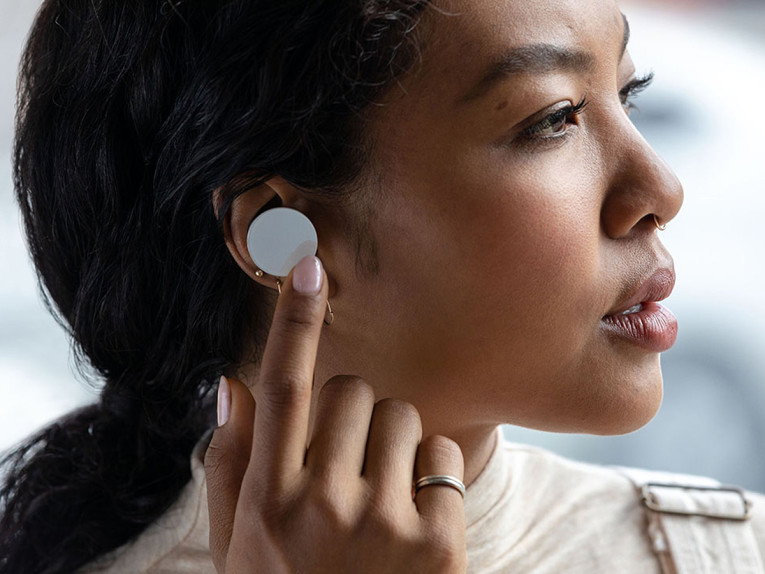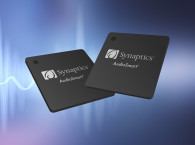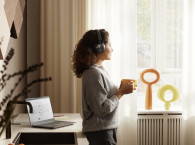By James Kirby and Dhruva Preston (Futuresource)
Even before the COVID-19 outbreak, the number of people using PC-based conferencing software to work from the office, or from home, was rising significantly. From its research across the corporate technology markets, including its Corporate End-User Surveys, Futuresource has consistently identified significant growth in the number of people working from home, and the positive impacts this is having on conferencing software usage and equipment sales. However, regardless of more people working from home, conferencing software is becoming one of the key methods of business communication, and purchasers have been equipping their employees with the hardware necessary to facilitate it. In many cases, this has meant equipping the entire workforce with headsets, hearables or speakerphones.

There are areas of the market which are more stable, where PC headsets have been used consistently for some time. These markets are known as call-centric applications – call centers, customer service, consumer sales floors, and other end-user types which are heavily reliant on voice over IP communication. In these scenarios, many have already switched to cloud-based platforms for calls and are equipped with high quality headsets designed for long calling hours. As a result, this category experiences modest growth, driven mainly by the increased use of computer connection types, allowing for more flexible use with a range of different conferencing platforms and dial-up methods.
The largest and fastest growing opportunity lies with what is often named the “task-based” workforce or application. This defines the increased use of PC-based communication sweeping across most other industries worldwide, facilitating team calls, client conference calls, calls from home, webinars and a range of other different needs. This is driven by the working from home trends already discussed, but also the use of conferencing and collaboration platforms as the key communication method. No longer does the modern employee answer a call with a handset. Instead, by putting on their headset, activating their personal speakerphone, or answering on a device they are already wearing, connecting them instantly to any scheduled or impromptu video or audio meeting whether at home or in the office.

Not only are these trends driving the demand for company investment in headset solutions for their employees, they are also leading to increases in the value end-users place on their headset as an essential occupational tool. Now being used for a considerable amount of time per day, for higher bandwidth audio communication and even for video and audio content consumption, office hearables are experiencing a revolutionary focus on product quality, flexibility and comfort amongst a more executive user-base. This is driving significant trade-up demand from an end user perspective, as well as increasing the relevance of technologies such as Bluetooth, software integration/certification, noise cancellation and even smart integration. This demand is resulting in purchases through IT channels to company-wide purchasers, but it's also causing a significant number of sales through online retail channels, where end-users need more specific solutions than those given as standard.
As a result of this growing “task-based” market, there is not just opportunity for existing brands but also those looking to enter the market. With the changing channel landscape and more purchases being made by end-users, consumer brands can make a significant impact here, and in many ways they already are. End-users are already using their consumer headphones at work for listening to content and even making calls, due to the same quality, comfort and convenience reasons mentioned for headset trade-up. However, these solutions haven’t been optimized for working environments.

Bose has become the first large consumer-facing brand to develop a wireless, ANC, premium office headset solution with a specialized microphone system for this space – the 700 UC. Meanwhile, Microsoft’s Surface earbuds hint at a possible future for the connected workforce, enabling Microsoft Office 365 integration. However, there will likely be many more entrants to this space, with both new and existing brands hoping to capitalize on the increased crossover between personal listening and business communication, and the opportunities for ever-more premium solutions in the B2B market.
In light of the recent coronavirus outbreak, these trends are expected to continue and, in many cases, accelerate. Lockdown is necessitating the use of conferencing platforms and the use of PC’s as the key communication device. The virus is expected to bring lasting cultural shifts in working from home and communication habits, further driving the market forwards. As a result, the office hearables market presents a key short-term and future investment opportunity for brands looking to diversify during the outbreak and beyond. Even outside of the immediate growth caused by COVID-19, end-user demand is driving significant value in the market, and leading brands aim to provide increasingly innovative all-round entertainment and premium audio conferencing devices. Those that benefit from these trends the most will be those that create solutions offering both the flexibility, feature-sets and branding of consumer audio products, along with the practicality, reliability and functionality of a B2B solution.

Futuresource publishes a range of research across the video and audio conferencing space, with one of its more recent publications being “Audio Conferencing in the Meeting Room Report 2019” which included microphones, speakerphones, videobars and conference phones. This report highlighted not only the opportunity within the meeting room, but also the opportunity on an individual employee level for purchases such as speakerphones and headsets to support modern communication needs.
Futuresource’s latest "Office Hearables" report will size and forecast the market by price point and look in-depth at the macro trends driving this space, as well as the feature sets required to make a significant impact in the business communication landscape.
www.futuresource-consulting.com





